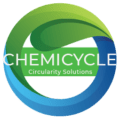Recycling and reusing plastics and foams through advanced chemical and thermal processes such as gasification, glycolysis, and pyrolysis offers significant economic, environmental, and operational benefits. Below are 10 ways companies can benefit, along with the predominant outputs for each process:
1. Carbon Credits and ESG Compliance
- Benefit: By reducing CO₂ emissions and diverting waste from landfills, companies can earn carbon credits and demonstrate compliance with Environmental, Social, and Governance (ESG) standards. These credits can be sold or offset against emissions.
- Products: Gasification produces syngas (carbon monoxide and hydrogen), a low-carbon fuel for industrial use.
2. Circular Economy Participation
- Benefit: Transforming waste into valuable raw materials enables companies to actively support a circular economy and close material loops, which enhances corporate sustainability reputations.
- Products: Glycolysis produces monomers such as ethylene glycol from PET plastics, which can be reused in new plastic production.
3. Energy Generation
- Benefit: Waste plastics and foams can be converted into energy-dense fuels, reducing reliance on fossil fuels for industrial processes or electricity generation.
- Products: Pyrolysis outputs liquid fuels such as pyrolysis oil, which can be refined into diesel or other energy sources.
4. Cost Savings on Raw Materials
- Benefit: Companies can reduce procurement costs by reusing recovered chemicals and monomers in their manufacturing processes instead of purchasing virgin materials.
- Products: Glycolysis yields oligomers that are used in manufacturing new polyester-based products.
5. Revenue from By-Products
- Benefit: Selling high-value outputs such as syngas, biochar, or hydrocarbon liquids creates new revenue streams.
- Products: Gasification generates biochar, used as a soil amendment or activated carbon.
6. Reduced Waste Disposal Costs
- Benefit: Avoiding landfill fees and other waste disposal expenses directly reduces operational costs.
- Products: All processes reduce landfill-bound waste significantly, with pyrolysis providing char that may also have secondary applications.
7. Compliance with Regulations
- Benefit: Processing plastics into reusable outputs aligns with tightening global regulations on plastic disposal and promotes environmental compliance.
- Products: Pyrolysis can convert plastics into hydrocarbons for use as chemical feedstocks.
8. Enhancing Corporate Image
- Benefit: Companies engaged in innovative recycling demonstrate environmental responsibility, boosting brand loyalty and customer trust.
- Products: Outputs such as glycol or syngas illustrate tangible results of sustainability efforts.
9. Access to Green Financing
- Benefit: Companies investing in recycling and reuse technologies may qualify for green loans or sustainable finance initiatives, lowering financing costs.
- Products: Gasification produces renewable hydrogen, a key input for green industries.
10. Innovation and Market Leadership
- Benefit: Developing cutting-edge recycling facilities positions a company as a leader in innovation, attracting partnerships and investments.
- Products: Pyrolysis generates wax, often used in specialty products like lubricants or cosmetics.
Key Takeaways on Predominant Products:
- Gasification: Syngas (H₂ and CO), biochar.
- Glycolysis: Ethylene glycol, oligomers.
- Pyrolysis: Pyrolysis oil (liquid fuels), hydrocarbons, wax, char.
These technologies not only unlock economic opportunities but also significantly contribute to global waste reduction and resource efficiency goal.
